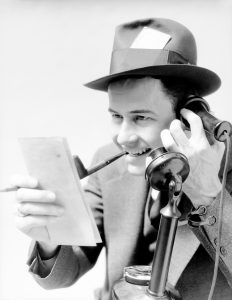How to Become a (Good) Environmental Journalist

by Jack Lueddeke
An environmental journalism class from Gettysburg College went to Washington D.C. last week to visit the Newseum and the National Geographic Headquarters. Their goal was to better understand how to be a good environmental journalist in today’s world.
At the National Geographic Headquarters, the students sat down with Brian Howard, a journalist with National Geographic, to interview him about journalism. Howard, has been working for National Geographic for eight years now, was happy to share his experience with the students.
The discussion focused heavily on what they could do to become successful journalists themselves, many of them share a dream of one day having Howard’s job. One of the first things brought up were internships that National Geographic offers. There is the Second Assistant Internship which usually pairs an intern with a photographer and their assistant; and there is the Fellows in Industry Internship which is longer term and often paid a little better. Aside from these two, Howard was keen to advertise the fall and spring internship programs, claiming that they are the best. The fall and spring internship programs don’t accept a lot of interns compared to the other two.
Brian also noted that an internship with National Geographic isn’t the only way to work there in the future. He suggests that wherever the students go that they do great work, telling them they are “only as strong as [their] portfolio.” At the end of the students’ time with Brian he left them with one final bit of advice: “Being able to go with the flow is really important in this line of work.”
One aspect of journalism the students learned about that’s important to becoming a good journalist is ethics. Ethics in journalism today is much more complicated than in the past with the advent of citizen journalism and social media. At the Newseum the students sat in a class with Sarah Bhatia, a volunteer with the Newseum, to learn about fake news. Bhatia led group activities that taught them how to distinguish actual news from fake news. She taught the students to use the E.S.C.A.P.E. acronym to do these activities. This is a tool that anyone can use to determine what’s real and what’s not in the news.
Bhatia explained that “fake news can cause a real problem.” There are three types of fake news, misinformation, disinformation, and malinformation, the latter being the most problematic. Malinformation is news that “may have real information with some disinformation but shared deliberately with the view to mislead and malicious in its intent.” (Unesco 2018) Bhatia taught the students that a good journalist must not spread malinformation and must report the truth.
Brian Howard also talked about ethics in his work. He prefaced his discussion on ethics by saying that “Journalism is different in different countries. In the U.S. it’s a lot more wild and free.” He continued to say that good journalists “don’t change quotes, ever,” which the Gettysburg students should know considering as freshmen they have to memorize the academic honor code. The Gettysburg College academic honor code reads as follows:
“I affirm that I will uphold the highest principles of honesty and integrity in all my endeavors at Gettysburg College and foster an atmosphere of mutual respect within and beyond the classroom.”
(2018 Honor Code)
For the students to better understand what journalism is and what they could do with it they explored the Newseum. There they saw exhibits that showcased different aspects of journalism. One exhibit that stuck out was the Pulitzer Prize winning photographs, which they had going as far back as 1943. The students were met with a wall of all the Pulitzer Prize photographs in chronological order when they walked into the exhibit. Each photograph, no better or no worse than the next, said as much as a written story. The exhibit demonstrated the importance of showing a story rather than writing one.
In this day and age stories are no longer just stories, they have multimedia facets that readers expect to see. The Pulitzer Prize photographs are inspirations for budding journalists to use in their future careers as journalists. When asked about multimedia stories Howard said “video is one of those things that has a lot of potential. [People] want to watch action, not talking heads.” Howard explained that contemporary journalists must be able to do at least a little bit of everything, from video and photography to writing, graphics and web design.
Now all that’s left for the students is to get working, build up their portfolios, and chase those stories. The students are in the perfect place to achieve their goals of becoming good journalists; and they’ll have plenty to write about because as Howard said, “You can find very good stories in your backyard… in your community.”
Sources:
N/A. 2018. Honor Code Gettysburg College. Gettysburg College. Gettysburg, Pennsylvania, United States of America
UNESCO. “Fake News and Disinformation”. 2018. Video
Edited on September 29, 2019
Changes:
- Edited for concision
- Added links to Brian Howard’s “About Me” page and Newseum’s “E.S.C.A.P.E.” poster